
Kalamaja: The Bohemian Heart of Tallinn
Discover Kalamaja in Tallinn: A bohemian neighbourhood where historic wooden houses meet modern creativity, offering vibrant streets, cultural hubs, and waterfront views.
Kalamaja, nestled just a short walk from Tallinn’s Old Town, is a vibrant and eclectic neighbourhood that captures the essence of bohemian charm. Known for its colourful wooden houses, Kalamaja offers a unique blend of old-world charm and modern creativity. The area has transformed from a historic fishing village into a trendy hotspot filled with cafes, galleries, and boutique shops. Stroll through the streets of Kalamaja and you'll be greeted by the sight of beautifully restored wooden architecture and an array of street art that adds a splash of colour to the neighbourhood. The Telliskivi Creative City, a hub of culture and creativity, is a must-visit. Here, old factory buildings have been repurposed into a lively space featuring restaurants, craft shops, and event venues. For history enthusiasts, the Seaplane Harbour Museum showcases maritime history in an impressive setting. Nature lovers can enjoy a leisurely walk in the nearby Kalamaja Park or along the waterfront promenade. As the sun sets, the neighbourhood's vibrant nightlife comes to life with cozy bars and live music venues that make Kalamaja an exciting place to explore day and night. Whether you are looking to immerse yourself in local culture, enjoy a delicious meal, or simply wander through charming streets, Kalamaja offers a delightful experience for every visitor.
Local tips in Kalamaja
- Visit Telliskivi Creative City for a mix of art, food, and shopping in repurposed factory buildings.
- Explore the Seaplane Harbour Museum for a fascinating dive into Estonia's maritime history.
- Take a leisurely walk along Kalamaja's waterfront promenade for beautiful views and fresh sea air.
- Don't miss the street art scattered throughout Kalamaja, which adds a unique charm to the neighbourhood.
Kalamaja: The Bohemian Heart of Tallinn
Kalamaja, nestled just a short walk from Tallinn’s Old Town, is a vibrant and eclectic neighbourhood that captures the essence of bohemian charm. Known for its colourful wooden houses, Kalamaja offers a unique blend of old-world charm and modern creativity. The area has transformed from a historic fishing village into a trendy hotspot filled with cafes, galleries, and boutique shops. Stroll through the streets of Kalamaja and you'll be greeted by the sight of beautifully restored wooden architecture and an array of street art that adds a splash of colour to the neighbourhood. The Telliskivi Creative City, a hub of culture and creativity, is a must-visit. Here, old factory buildings have been repurposed into a lively space featuring restaurants, craft shops, and event venues. For history enthusiasts, the Seaplane Harbour Museum showcases maritime history in an impressive setting. Nature lovers can enjoy a leisurely walk in the nearby Kalamaja Park or along the waterfront promenade. As the sun sets, the neighbourhood's vibrant nightlife comes to life with cozy bars and live music venues that make Kalamaja an exciting place to explore day and night. Whether you are looking to immerse yourself in local culture, enjoy a delicious meal, or simply wander through charming streets, Kalamaja offers a delightful experience for every visitor.
Iconic landmarks you can’t miss
Balti Jaama Turg
Discover the heart of Tallinn at Balti Jaama Turg, a vibrant market offering local produce, unique crafts, and authentic Estonian cuisine.

Telliskivi Creative City
Explore the artistic heart of Tallinn at Telliskivi Creative City, a cultural hub filled with creativity, cuisine, and community events.
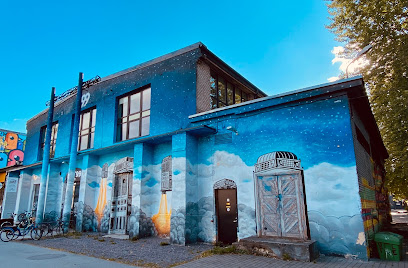
Kalamaja Cemetery Park
Explore the tranquil Kalamaja Cemetery Park in Tallinn, a unique cemetery park blending serene nature with rich historical significance.

House of the Blackheads
Discover the enchanting House of the Blackheads in Tallinn, a historical landmark embodying the city's rich merchant heritage and architectural beauty.

Kalamaja muuseum
Explore the Kalamaja Museum in Tallinn for a captivating glimpse into Estonia's maritime heritage and vibrant local culture.

Kalaranna Promenade
Discover the beauty and culture of Tallinn at Kalaranna Promenade, where stunning sea views and vibrant local life come together in a serene setting.

Mälestusmärk deporteeritutele
Explore the Mäletusmärk Deporteeritutele, Tallinn's historical landmark that encapsulates the city's rich heritage and architectural splendor.

Street with old traditional wooden houses
Explore the enchanting street of traditional wooden houses in Tallinn, a historical gem showcasing Estonia's rich architectural heritage.

Kalamaja kalmistu värav-kellatorn
Explore the Kalamaja Cemetery Bell Tower, a historical gem of Tallinn, offering a serene glimpse into the city's past amidst stunning architecture and lush grounds.
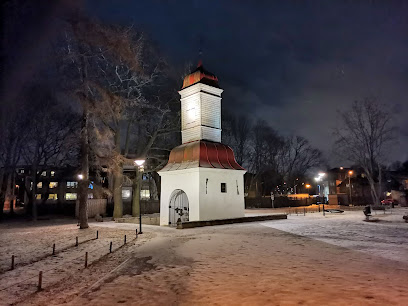
Skulptur
Explore the enchanting Skulptur in Tallinn, a unique outdoor sculpture park blending art, nature, and culture for an unforgettable experience.

Unmissable attractions to see
Balti Jaama Turg
Explore Balti Jaama Turg in Tallinn, where local produce meets artisanal crafts in a vibrant marketplace brimming with culture and flavors.

Kadriorg Park
Explore the enchanting Kadriorg Park, where history, art, and nature come together in Tallinn's urban oasis.

Lennusadam
Explore Estonia's maritime heritage at Lennusadam, the Seaplane Harbour, where history comes alive through engaging exhibits and stunning vessels.

Freedom Square
Explore Freedom Square in Tallinn, a historic site rich in culture and national pride, surrounded by stunning architecture and vibrant events.
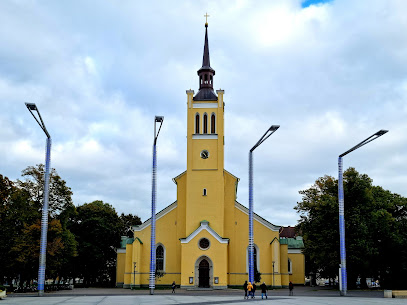
Tallinn TV Tower
Explore the Tallinn TV Tower, Estonia's tallest landmark, offering breathtaking views, rich history, and delightful dining experiences.

Kadriorg Art Museum
Explore the rich artistic heritage at Kadriorg Art Museum, a baroque masterpiece nestled in the lush gardens of Kadriorg Park, Tallinn.

Estonian Open Air Museum
Explore the rich cultural tapestry of Estonia at the Estonian Open Air Museum, where history comes alive in a stunning natural setting.

Telliskivi Creative City
Explore the artistic flair of Telliskivi Creative City in Tallinn, a vibrant hub of culture, cuisine, and creativity perfect for every traveler.

Fotografiska Tallinn
Explore Fotografiska Tallinn, a modern art museum and cultural hub showcasing contemporary photography in a vibrant setting.

Kalamaja Cemetery Park
Explore the tranquil beauty and rich history of Kalamaja Cemetery Park, a serene oasis in Tallinn's vibrant Põhja-Tallinn district.
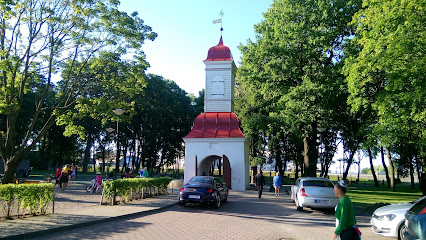
Kalaranna Promenade
Explore the stunning Kalaranna Promenade in Tallinn, where scenic coastal views and vibrant city life merge into an unforgettable experience.

Skulptur
Experience the vibrant artistry and cultural narratives at Skulptur, a premier tourist attraction in Tallinn, showcasing stunning contemporary sculptures.

Street art Axolot ja Sinine hirv
Experience the vibrant street art of Axolot ja Sinine Hirv in Tallinn, a stunning testament to the city's creative spirit amidst the urban landscape.

Essential places to dine
Restaurant F-Hoone
Discover the eclectic flavors of Estonia at F-Hoone, nestled in Tallinn's vibrant Telliskivi Creative City.

Kivi Paber Käärid
Experience the best of gluten-free dining and live music at Kivi Paber Käärid in Tallinn's creative hub.

Restaurant Moon
Experience modern European cuisine at Restaurant Moon in Tallinn – where tradition meets innovation in every bite.
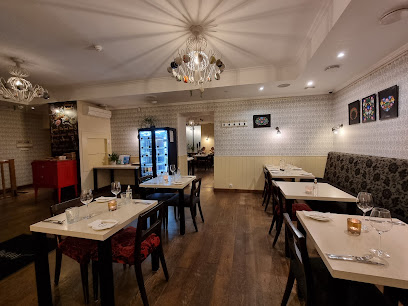
Humalakoda Pub Restaurant Brewery
Experience authentic Estonian cuisine and craft beer at Humalakoda Pub Restaurant Brewery in Tallinn's vibrant Põhja-Tallinn.

Cocktail bar & resto LaTabla
Discover vibrant Latin American flavors at LaTabla in Tallinn – where every meal is a celebration of taste!

Peatus
Experience the vibrant flavors and artistic ambiance at Peatus in Tallinn's Telliskivi Creative City.
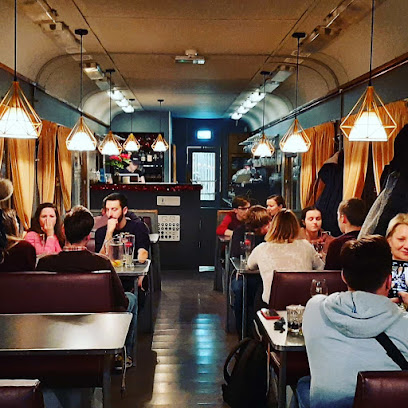
Ülo
Discover Ülo: A culinary treasure in Tallinn blending local flavors with modern dining experiences.

Frenchy Bistro
Discover authentic French cuisine at Frenchy Bistro in Tallinn - where every meal feels like a taste of Paris.

The Kurze
Experience the vibrant flavors of Estonia at The Kurze, where culinary excellence meets cozy ambiance in Põhja-Tallinn.
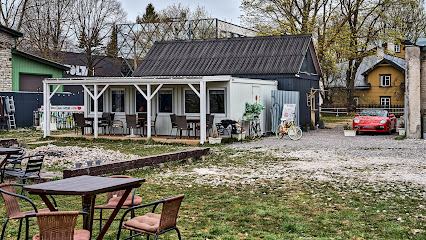
Oda Resto
Experience authentic Georgian cuisine at Oda Resto in Tallinn - where tradition meets flavor in every bite.

Markets, malls and hidden boutiques
Cbetka clothing store
Explore the charm of Tallinn at Cbetka Clothing Store, your go-to destination for vintage clothing and unique jewelry.

Sveta Vintage
Explore the charm of Sveta Vintage, a treasure trove of unique clothing in Tallinn, offering sustainable fashion finds at fantastic prices.

Tali Concept
Explore Tali Concept in Tallinn for unique souvenirs that embody the spirit of Estonia, with handcrafted items from local artisans.

Kopli Couture
Discover unique vintage fashion at Kopli Couture, a charming clothing store in Tallinn's vibrant Telliskivi district, perfect for retro enthusiasts.

Ilma Pood
Explore Ilma Pood, Tallinn's premier eco-friendly store, offering sustainable products that support a greener lifestyle.

Lennusadama Muuseumipood
Explore the vibrant Lennusadama Muuseumipood in Tallinn for unique gifts, local art, and quality art supplies, perfect for every traveler.
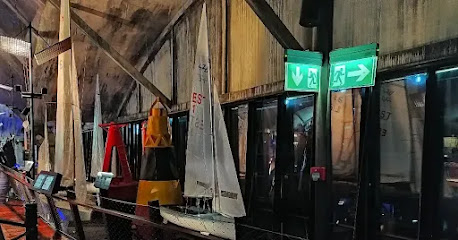
MS Vintage Tallinn
Explore the charm of vintage fashion at MS Vintage Tallinn, where unique clothing pieces tell their own stories.
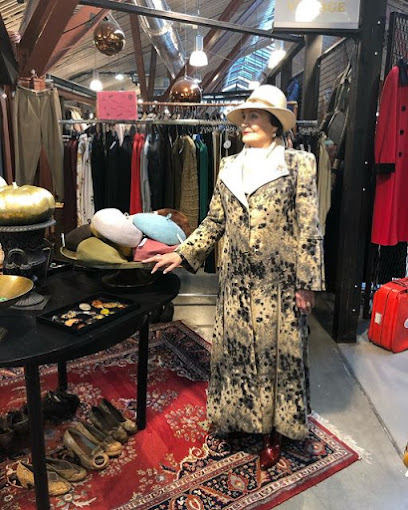
Khuul Thrift & Consignment Store
Explore Khuul Thrift & Consignment Store for unique vintage clothing and sustainable fashion in Tallinn's vibrant Põhja-Tallinn district.

Kingijaam.ee
Explore Kingijaam.ee for unique Estonian gifts and souvenirs in the heart of Tallinn's vibrant Põhja-Tallinn district.

Yselin
Explore Yselin, Tallinn's enchanting antique store, where history and charm meet to offer unique vintage treasures and artifacts.

Essential bars & hidden hideouts
St. Vitus
Experience the vibrant nightlife of Tallinn at St. Vitus, a creatively designed bar serving local craft beers and artisanal cocktails.

Pudel
Experience the vibrant nightlife of Tallinn at Pudel, a unique bar offering a diverse selection of craft beers and a cozy atmosphere.

Kolm Lõvi
Experience the charm and vibrant atmosphere of Kolm Lõvi, a must-visit bar in Tallinn offering a wide range of drinks and local culture.
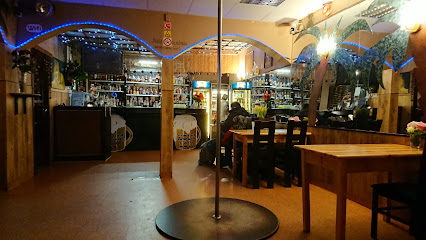
Pub Uba ja Humal
Discover Tallinn's vibrant beer culture at Pub Uba ja Humal, where local brews and a warm atmosphere await every visitor.

Time to Wine Bar and Shop
Experience the best of local and international wines at Time to Wine Bar and Shop, a cozy haven for enthusiasts in Tallinn's Põhja-Tallinn district.

Põhja Konn
Experience the eclectic charm of Tallinn at Põhja Konn, a vibrant bar offering a diverse drink selection and lively atmosphere.

Plan B Wine bar
Experience the charm of Tallinn at Plan B Wine Bar, where every sip tells a story through a curated selection of exceptional wines.

Vaat Brewery and Taproom
Explore the vibrant craft beer scene at Vaat Brewery and Taproom in Tallinn, where local flavors and a lively atmosphere come together.

Chin Chin veinibaar, lounge
Discover the ultimate wine experience at Chin Chin Veinibaar, a chic lounge in Tallinn offering an exquisite selection of global wines and local flavors.

Iglubaar
Discover Iglubaar, a trendy bar in Tallinn offering creative cocktails, live music, and a vibrant local atmosphere for an unforgettable night out.

Local Phrases
-
- HelloTere
[teh-reh] - GoodbyeHead aega
[hed ah-eh-gah] - YesJah
[yah] - NoEi
[ay] - Please/You're welcomePalun
[pah-loon] - Thank youAitäh
[eye-tah] - Excuse me/SorryVabandust
[vah-bahn-doost] - How are you?Kuidas sul läheb?
[koo-ee-dahs sool lah-heb] - Fine. And you?Hästi. Ja sina?
[hahs-tee yah see-nah] - Do you speak English?Kas sa räägid inglise keelt?
[kahs sah rah-ee-geed eeng-lee-seh kehlt] - I don't understandMa ei saa aru
[mah ay sah ah-roo]
- HelloTere
-
- I'd like to see the menu, pleaseMa tahaksin menüüd näha, palun
[mah tah-hahk-seen meh-noo-d nah-hah pah-loon] - I don't eat meatMa ei söö liha
[mah ay soo lee-hah] - Cheers!Terviseks!
[ter-vee-sehks] - I would like to pay, pleaseMa sooviksin maksta, palun
[mah soh-veeks-een mahk-stah pah-loon]
- I'd like to see the menu, pleaseMa tahaksin menüüd näha, palun
-
- Help!Appi!
[ah-pee] - Go away!Mine ära!
[mee-neh ah-rah] - Call the Police!Helista politseile!
[heh-lee-stah poh-leet-seh-ee-leh] - Call a doctor!Helista arstile!
[heh-lee-stah ahr-stee-leh] - I'm lostMa olen eksinud
[mah oh-lehn ehk-see-noo-d] - I'm illMa olen haige
[mah oh-lehn hah-ee-geh]
- Help!Appi!
-
- I'd like to buy...Ma tahaksin osta...
[mah tah-hahk-seen oh-stah] - I'm just lookingMa vaatan ainult
[mah vah-tahn eye-noolt] - How much is it?Kui palju see maksab?
[koo-ee pahl-yoo seh mahk-sahb] - That's too expensiveSee on liiga kallis
[seh ohn lee-gah kah-lees] - Can you lower the price?Kas saad hinda alandada?
[kahs sah-ahd heen-dah ah-lahn-dah-dah]
- I'd like to buy...Ma tahaksin osta...
-
- What time is it?Mis kell on?
[mees kell ohn] - It's one o'clockOn üks
[ohn yooks] - Half past (10)Pool (10)
[pohl (dets-ee-sah] - MorningHommik
[hohm-meek] - AfternoonPärastlõuna
[pah-rahst-loo-nah] - EveningÕhtu
[ooh-too] - YesterdayEile
[ay-leh] - TodayTäna
[tah-nah] - TomorrowHomme
[hohm-meh] - 1Üks
[ooks] - 2Kaks
[kahks] - 3Kolm
[kolm] - 4Neli
[neh-lee] - 5Viis
[vees] - 6Kuus
[koos] - 7Seitse
[sayt-seh] - 8Kaheksa
[kah-hek-sah] - 9Üheksa
[oo-hek-sah] - 10Kümme
[koome]
- What time is it?Mis kell on?
-
- Where's a/the...?Kus on...
[koos ohn] - What's the address?Mis on aadress?
[mees ohn ah-ah-dress] - Can you show me (on the map)?Kas saad mulle näidata (kaardil)?
[kahs sah-ahd moo-leh nah-ee-tah-dah kaar-deel] - When's the next (bus)?Millal on järgmine (buss)?
[meel-lahl ohn yahrg-mee-neh booss] - A ticket (to ....)Pilet (....)
[pee-leht]
- Where's a/the...?Kus on...
History of Kalamaja
-
Kalamaja, meaning 'Fish House' in Estonian, was originally a fishing village established in the 14th century. Its proximity to the Baltic Sea made it an ideal location for local fishermen, and its name reflects the community's deep-rooted connection to the water. This area played a crucial role in supplying fish to the growing population of Tallinn, which was then a significant Hanseatic trading city.
-
By the 19th century, Kalamaja began to transform from a quiet fishing village into an industrial hub. The construction of the railway and the establishment of factories attracted a workforce, leading to rapid urbanization. This period saw the rise of wooden architecture, with many of the charming wooden houses built during this time still standing today, showcasing the district's unique architectural heritage.
-
Throughout the 19th and early 20th centuries, Kalamaja became a melting pot of different cultures. Immigrants from various parts of Europe settled in the area, contributing to its vibrant social fabric. This diversity is reflected in the local architecture, cuisine, and cultural events that continue to thrive in Kalamaja today.
-
The impact of World War II and subsequent Soviet occupation brought significant changes to Kalamaja. Many of the area's industries were nationalized, and the community underwent a significant transformation. Soviet planners introduced new architectural styles and residential blocks, which altered the neighborhood's landscape, though many historical buildings remained intact, creating a juxtaposition of old and new.
-
In recent years, Kalamaja has experienced a renaissance. With its historic charm and proximity to the city center, it has attracted artists, young professionals, and families. This revitalization has led to the restoration of old buildings, the opening of trendy cafes and shops, and the establishment of cultural events that celebrate both its maritime heritage and contemporary Estonian culture.
Kalamaja Essentials
-
Kalamaja is easily accessible from various neighborhoods in Tallinn. From the city center, you can take tram lines 1 or 2, which will drop you off at the Balti Jaam (Baltic Station). It’s a short walk from there to Kalamaja. Alternatively, buses 3, 5, and 6 also connect the city center to Kalamaja. If you arrive at the Lennart Meri Tallinn Airport, you can take bus 2 to the city center and then transfer to a tram or bus heading to Kalamaja.
-
Kalamaja is a pedestrian-friendly neighborhood, making it easy to explore on foot. Public transportation options include trams, buses, and the occasional taxi. Tram lines 1 and 2 run through the area, while several bus routes link Kalamaja to the rest of Tallinn. Bicycles can be rented from various local services, allowing you to navigate Kalamaja and the surrounding seaside areas at your own pace.
-
Kalamaja is generally a safe area for tourists, but standard precautions should still be taken. Avoid walking alone in dimly lit areas after dark. While most parts of the neighborhood are safe, it is advisable to stay vigilant in crowded places and be cautious of pickpockets, especially near popular tourist spots. Areas around the train station can be less secure at night.
-
In case of emergency, dial 112 for police, fire, or medical assistance in Estonia. The local hospital is located in the city center, and there are pharmacies within Kalamaja for minor health issues. It is advisable to have travel insurance that covers medical emergencies and any necessary medications.
-
Fashion: Do dress appropriately for the weather, as it can be quite variable. Casual attire is acceptable, but avoid overly revealing clothing. Religion: While Kalamaja is not heavily religious, respect local customs and traditions. Public Transport: Do offer your seat to the elderly or those in need. Don’t eat or drink on trams or buses. Greetings: Do greet locals with a friendly smile and 'Tere' (Hello). Eating & Drinking: Do try local dishes at the various eateries. Don’t refuse food or drink offered to you, as it is seen as impolite.
-
To experience Kalamaja like a local, visit the Telliskivi Creative City, where you can find shops, cafes, and studios. Try to check out the local markets for fresh produce and artisan goods. Don't miss the opportunity to stroll along the waterfront and enjoy the beautiful views of the Baltic Sea. Engaging with locals at community events or festivals can provide deeper insights into the culture and lifestyle of Tallinn.
Nearby Cities to Kalamaja
-
Things To Do in Rapla
-
Things To Do in Paide
-
Things To Do in Helsinki
-
Things To Do in Espoo
-
Things To Do in Haapsalu
-
Things To Do in Rakvere
-
Things To Do in Porvoo
-
Things To Do in Pärnu
-
Things To Do in Kärdla
-
Things To Do in Viljandi
-
Things To Do in Jõhvi
-
Things To Do in Tartu
-
Things To Do in Turku
-
Things To Do in Lahti
-
Things To Do in Kuressaare








